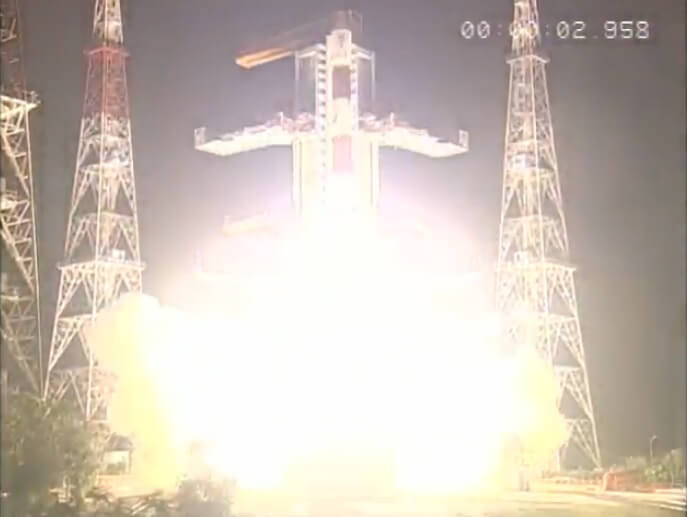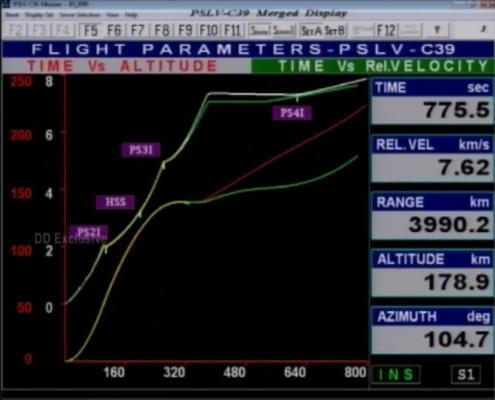Having flown 36 successful flights since its last (partial) failure in 1997, the Indian Space Research Organisation (ISRO) was bound to be disappointed over the launch failure of its PSLV-C39 flight. The failure, which was caused by the fairing failing to separate during the second stage burn, lost India its Indian Regional Navigation Satellite System (IRNSS) IRNSS-1H navigation satellite. The PSLV-XL launch took place from the Satish Dhawan Space Centre at Sriharikota, India at 1330 GMT. The satellite was originally planned as a ground spare but was launched to replace IRNSS 1A already in orbit which had lost all three of its rubidium atomic clocks.

Before it all went wrong: PSLV-XL on flight PSLV-C39 lifts off from its launch pad. Courtesy: ISRO
At first all seemed to be well with the launch with ISRO’s public relations launch commentator, supplemented by nofications from the real-life range controller, reading out the various stage and booster separation and ignition events as he got to them. Except that there was one missing: there had been no mention of a fairing separation. And soon the mission control graph showing the actually launch vehicle altitude-distance track versus the predicted one began to diverge which that meant that ISRO had a failed launch on its hands.

Diagram of IRNSS-1H inside the PSLV fairing. Courtesy: ISRO via Jonathan McDowell
For with the extra weight of the fairing, the launch had a velocity shortfall and the fourth stage despite doing its best to make up the difference, only achieved an orbit of circa 165 km x 6,554 km compared to its planned 284 x 20,650 km transfer orbit. Given the low perigee and the atmospheric drag at that altitude, the orbit achieved is unstable and the spacecraft along with the fairing and final launch vehicle stage are expected to re-enter the Earth’s atmosphere within a few orbits. There were reports that the spacecraft had actually separated from the final fourth stage/payload adapter of the launch vehicle but found itself trapped inside the fairing.

The actual trajectory (bottom yellow line) starts to move away from the expected (red line). Courtesy: ISRO
The IRNSS-1H spacecraft’s eventual destination was to be a highly inclined geosynchronous circular orbit of 36,000 km altitude – inclined at 27 degrees and located over 55 degrees East – from where it was to act as a navigation satellite as part of the part of Gagan/NavIC navigation system for civil aviation.
An investigation will now to take place to examine the exact cause of the failure. Seradata understands that the launch was not insured. However, underwriters have noted the failure and are expecting to raise premium rates for future PSLV launches as a result of this launch anomaly.






